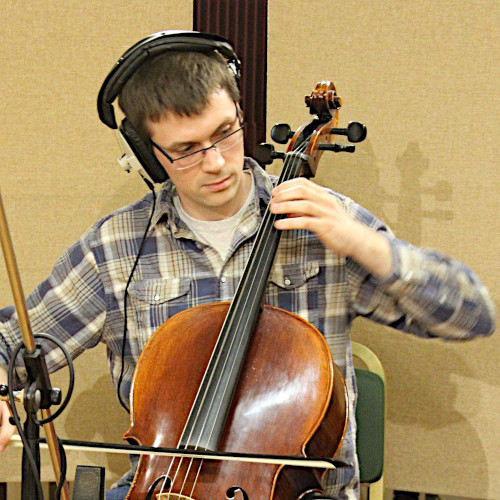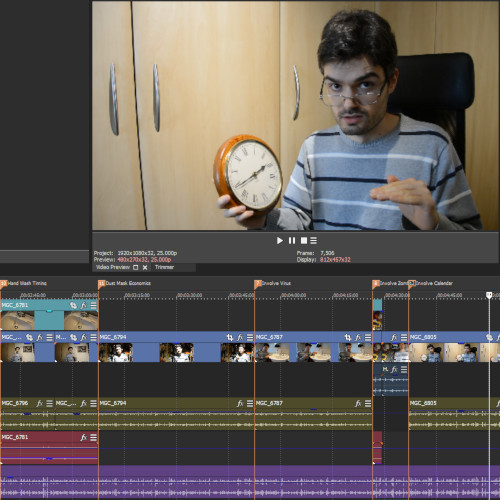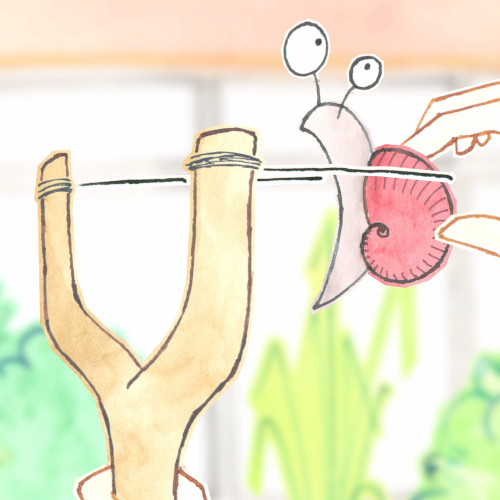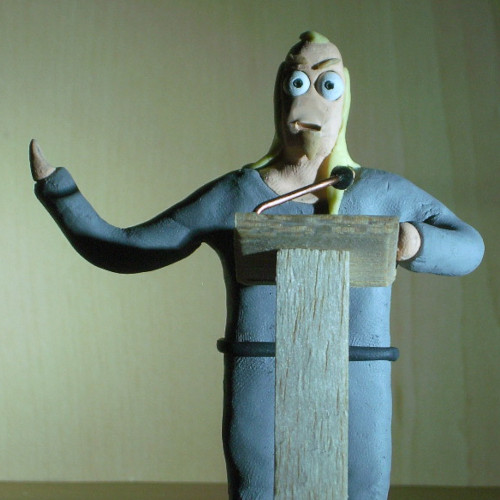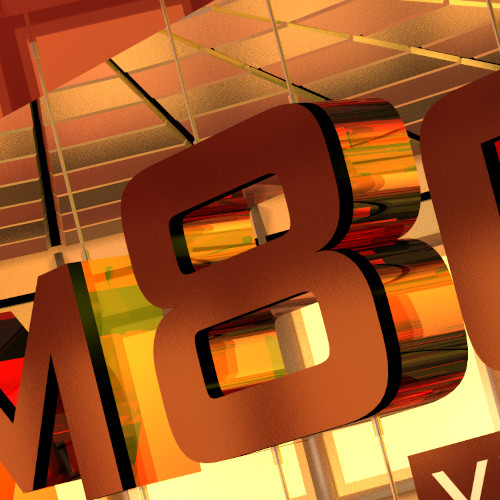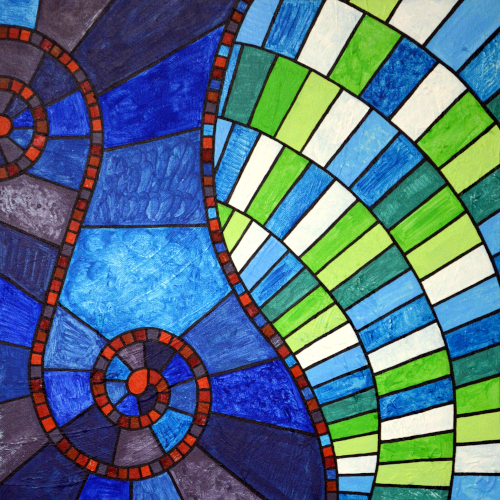A few years down the line from our experimental audiovisual collaboration Stained Glass XI, Tim set out on a PhD which, among other things, aimed to explore the same ideas from Stained Glass XI in more depth.
The major limitation of the synaesthetic painting/music combo was that the painting is a single static image, somewhat limiting the amount of musical material which could be drawn from it. So Tim proposed that this time, we make a film. Instead of the usual arrangement where the director makes their film, and then hands it over all-but-complete to the composer to have music added as the last element in the process, Tim wanted to try a more reciprocal approach, with the script and the score being developed in parallel as a single, truly collaborative creative process.
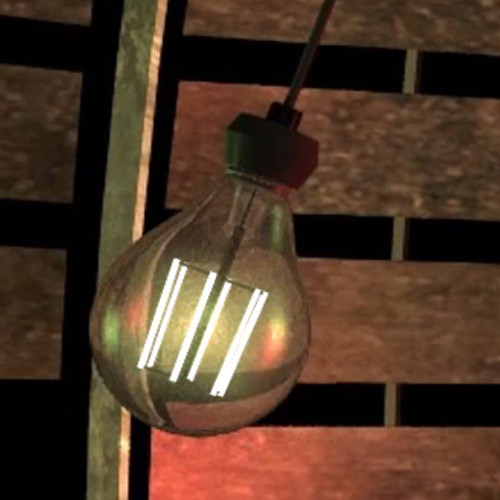
This caused a teething problem, because neither of us was sure who should be making the first move. But eventually one of us blinked, and we started to develop what became a semi-abstract four-minute film in computer-generated animation, centred around a light bulb, with a largely piano-derived soundtrack. Visual and musical ideas move in parallel - there are audible motifs associated with particular colours and with particular pieces of the on-screen machinery; also, both the musical form and the visual trajectory (a single uncut shot spanning the entire film) mirror each other's there-and-back-again overall structures.
Some of the earlier workfiles are labelled Colour Machine, but somewhere around the halfway point of production Tim agreed to use my title suggestion Imagined Engines, as he'd decided that it was a better fit for the film's underlying concept - we both conceived of it as a metaphor for the inner workings of an artist's mind, with the light bulb representing an idea moving through stages of development before being ready to reach the outside world.
On a technical level, the project made use of Steve Glanville's Anim8or software, which I'd been using on-and-off for nearly 20 years (and which I'd won a competition to design a new splashscreen for). The film - especially the fact that it's a single 5,073-frame shot - pushed the software to its limits, and the final render process was a horrendous time crunch, peaking at four or five different computers rendering various blocks of frames at the same time. But we got there, and although it's rather different from my usual filmmaking output, I'm still very pleased with the results.
